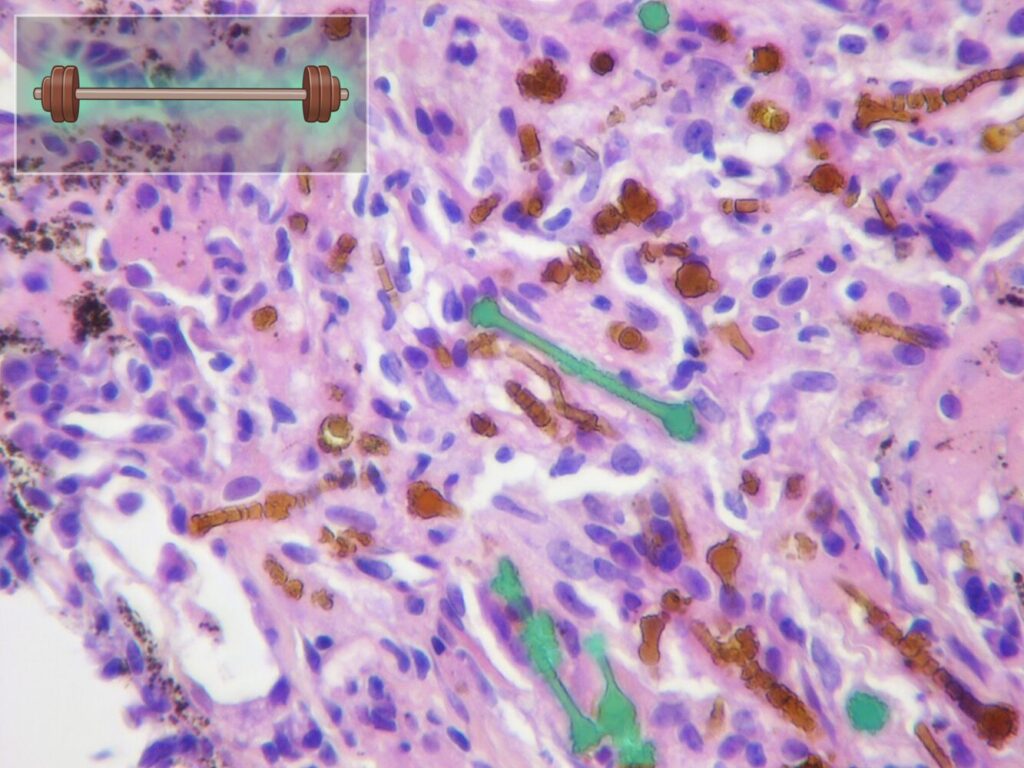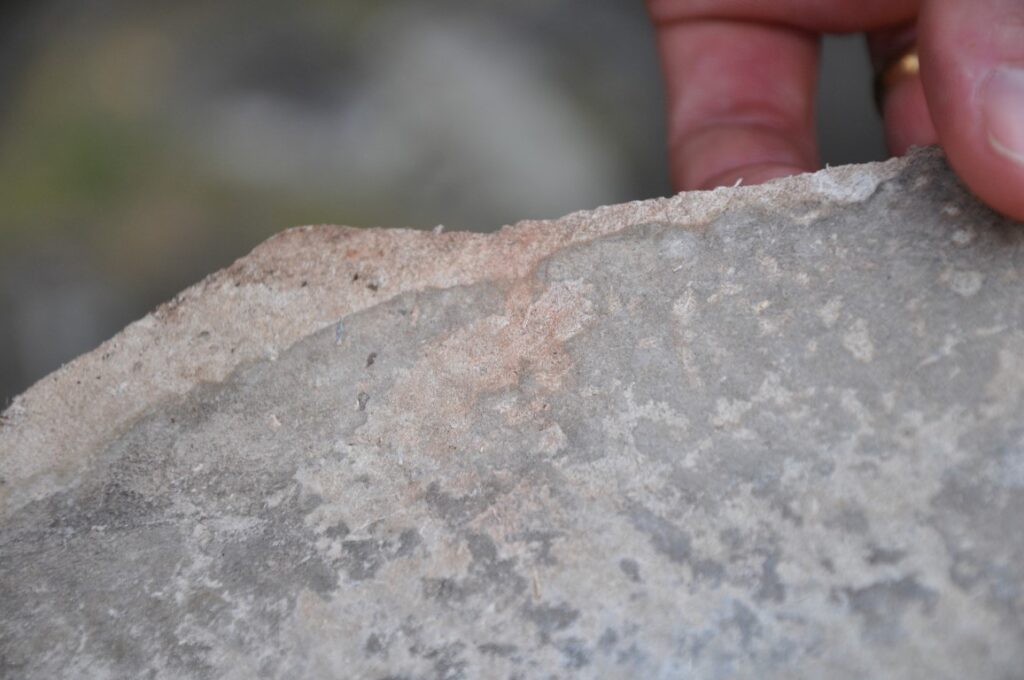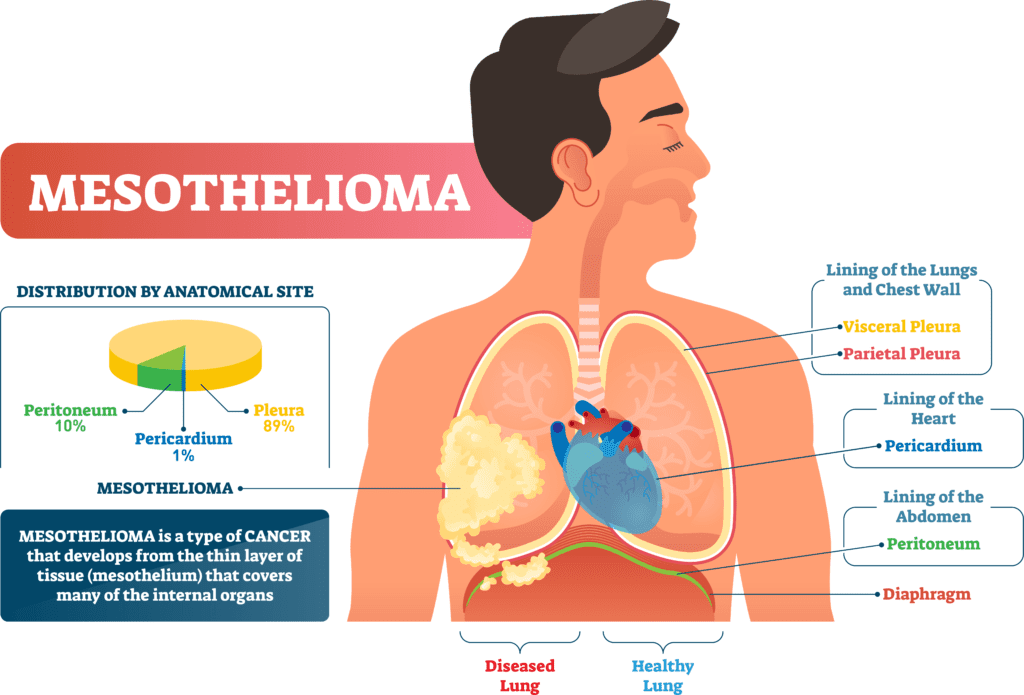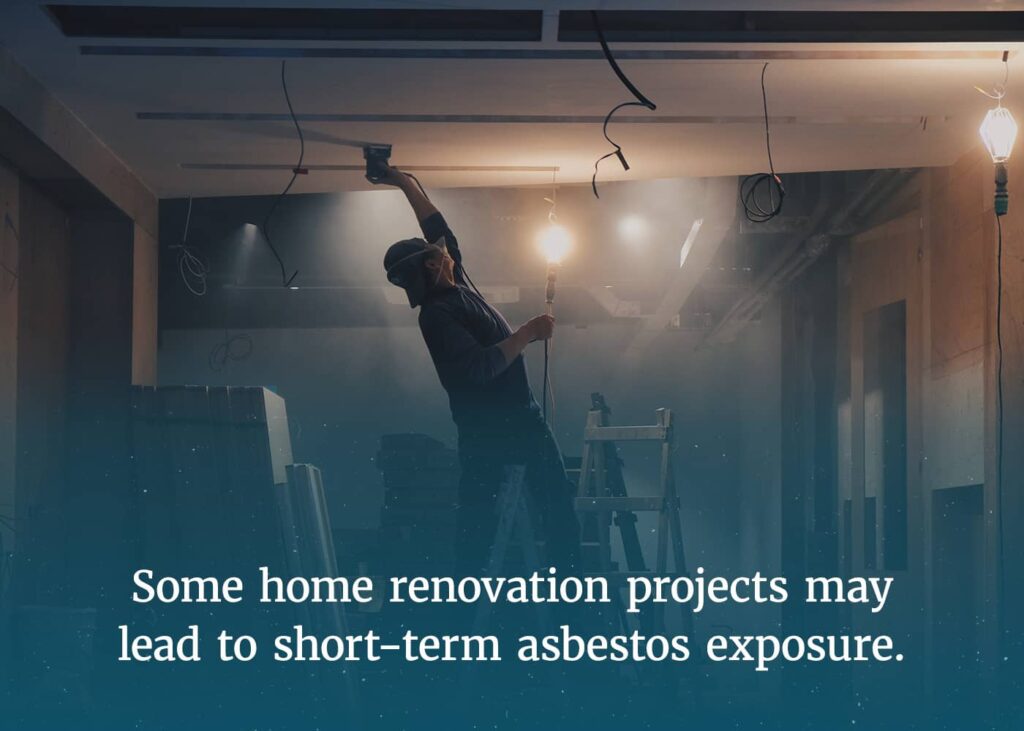Asbestos bodies, the microscopic silica fibers formed in the lungs as a result of asbestos exposure, can be found in various locations within the human body. Although primarily observed within the lung tissue, they have also been found within the lymph nodes, pleural fluid, and even other organs such as the liver and spleen. This article explores the different locations where asbestos bodies are commonly seen and highlights the importance of early detection for individuals with a history of asbestos exposure. With a focus on educating readers about the potential health risks associated with asbestos, this article aims to raise awareness and promote better understanding of this hazardous material.


Different Body Organs
Lungs
The lungs are one of the most commonly affected organs by asbestos exposure. When asbestos fibers are inhaled, they can lodge in the lungs and cause inflammation and scarring over time. Asbestos fibers can accumulate in the lungs and contribute to the formation of asbestos bodies, which are microscopic fibers coated with iron. These asbestos bodies can be seen in the lung tissue of individuals who have been exposed to asbestos.
Pleura
The pleura is a thin membrane that surrounds the lungs and lines the chest cavity. It is also a known location where asbestos bodies can be seen. Asbestos fibers that are inhaled can travel to the pleura and cause irritation and inflammation. Over time, this can lead to the formation of asbestos bodies within the pleura. The presence of asbestos bodies in the pleura can be detected through medical imaging or biopsy.
Peritoneum
The peritoneum is the membrane that lines the abdominal cavity and covers the organs within it. Although asbestos exposure is most commonly associated with lung diseases, it can also affect the peritoneum. Asbestos fibers that are ingested or inhaled can reach the peritoneum and cause inflammation and scarring. This can lead to the formation of asbestos bodies in the peritoneum, which can be visualized through medical imaging or biopsy.
Pericardium
The pericardium is the membrane that surrounds the heart. While asbestos-related diseases primarily affect the lungs, there have been cases where asbestos bodies have been identified in the pericardium. The presence of asbestos bodies in the pericardium can indicate exposure to asbestos and may be associated with asbestos-related diseases such as mesothelioma or lung cancer.
Occupational Exposure
Construction workers
Construction workers are at risk of occupational asbestos exposure due to the widespread use of asbestos-containing materials in the construction industry in the past. Asbestos was commonly used in insulation, roofing materials, and fireproofing products. During remodeling, renovation, or demolition of older buildings, construction workers can be exposed to airborne asbestos fibers, increasing their risk of developing asbestos-related diseases.
Miners
Miners who work in asbestos mines or mines that contain asbestos-containing minerals are at high risk of occupational asbestos exposure. In these mining environments, asbestos fibers can be released into the air, and miners can inhale these fibers, leading to respiratory problems and the formation of asbestos bodies in the lungs.
Shipyard workers
Shipyard workers, especially those involved in shipbuilding and repair, are frequently exposed to asbestos due to its historical use as an insulating material in ships. Shipyard workers can come into contact with asbestos fibers when handling or removing asbestos-containing insulation materials, leading to potential inhalation or ingestion of these fibers. This occupational exposure puts shipyard workers at risk of developing asbestos-related diseases.


Environmental Exposure
Air
Asbestos fibers can become airborne when disturbed or released into the environment. This can occur during industrial activities, construction work, or natural disasters that disturb asbestos-containing materials. Individuals living or working in close proximity to such activities are at risk of environmental asbestos exposure through the inhalation of airborne fibers. Inhalation of asbestos fibers from the air can contribute to the development of asbestos-related diseases.
Water
Asbestos can also enter the water supply through various sources. It can enter natural bodies of water through erosion and weathering of asbestos-containing minerals. Asbestos fibers can also contaminate water sources through industrial processes and the disposal of asbestos-containing waste. Ingestion of asbestos-contaminated water can lead to the deposition of asbestos fibers in the body organs, potentially causing health issues.
Soil
Asbestos can be present in soil due to the disposal of asbestos-containing materials or the natural presence of asbestos minerals. Soil contaminated with asbestos fibers can pose a risk to individuals, especially during construction or excavation activities. Disturbing or digging in asbestos-contaminated soil can release airborne fibers, leading to potential inhalation or ingestion and subsequent health risks.
Residential Exposure
Old buildings
Older buildings constructed before regulations on asbestos use may contain asbestos-containing materials such as insulation, ceiling tiles, or flooring. Individuals living or working in these buildings can be exposed to asbestos fibers when these materials deteriorate or are disturbed during maintenance, renovation, or demolition. Proper inspection and professional asbestos removal are crucial in addressing potential residential exposure.
Insulation materials
Asbestos was commonly used as insulation in buildings and homes due to its fire resistance and insulating properties. Houses built or insulated with asbestos-containing materials can release asbestos fibers into the air if these materials deteriorate or are damaged. Individuals residing or working in these buildings may be exposed to asbestos through the inhalation of these fibers, increasing their risk of developing asbestos-related diseases.


Medical Diagnosis
Autopsy
Autopsies can provide valuable information regarding asbestos-related diseases and the presence of asbestos bodies. During an autopsy, tissue samples from various organs can be collected and examined under a microscope to detect the presence of asbestos bodies. The detection of asbestos bodies in the lungs, pleura, peritoneum, or pericardium can confirm asbestos exposure and aid in the diagnosis of asbestos-related diseases.
Biopsy
A biopsy involves the collection of a small tissue sample for analysis. For individuals suspected of having asbestos-related diseases, biopsies can be performed on organs such as the lungs, pleura, or peritoneum to determine the presence of asbestos bodies and other markers of asbestos exposure. Biopsies can provide important diagnostic information and help guide treatment decisions.
Bronchoscopy
Bronchoscopy is a procedure that allows the visualization of the airways and collection of samples from the lungs. It can be used to detect the presence of asbestos bodies in the bronchial tubes and lungs. During a bronchoscopy, a flexible tube with a light and camera is inserted through the nose or mouth and into the airways, allowing the physician to examine the lungs and collect tissue samples for analysis.
Risk Factors
Asbestos exposure
Exposure to asbestos is the primary risk factor for developing asbestos-related diseases. Individuals who have been exposed to asbestos fibers, whether occupationally or environmentally, are at an increased risk of developing diseases such as mesothelioma, asbestosis, or lung cancer. The duration and intensity of exposure, as well as the type of asbestos fibers encountered, can influence the risk of developing these diseases.
Smoking
Smoking cigarettes significantly increases the risk of developing lung cancer in individuals exposed to asbestos. When combined, smoking and asbestos exposure have a synergistic effect, leading to a much greater risk of developing lung cancer compared to either factor alone. Smoking cessation is strongly recommended for individuals with a history of asbestos exposure to reduce their risk of developing asbestos-related diseases.
Gender
Gender can also influence the risk of developing asbestos-related diseases. Men are generally more likely than women to be occupationally exposed to asbestos, which contributes to their higher incidence of asbestos-related diseases. However, both men and women can be affected by asbestos exposure, and the severity of the diseases can vary between genders.
Age
The risk of developing asbestos-related diseases increases with age. The latency period between asbestos exposure and the development of diseases such as mesothelioma is typically several decades. As individuals age, the cumulative effects of asbestos fibers in the body can lead to the manifestation of asbestos-related diseases. Early detection and regular medical monitoring are crucial for individuals with a history of asbestos exposure.


Clinical Significance
Asbestos-related diseases
Asbestos-related diseases encompass a range of conditions, including mesothelioma, asbestosis, and lung cancer. Mesothelioma is a rare and aggressive cancer that primarily affects the lining of the lungs or abdomen. Asbestosis is a chronic lung condition characterized by scarring and inflammation of the lung tissue. Lung cancer can also result from asbestos exposure, especially when combined with smoking. The presence of asbestos bodies in body organs can indicate a higher likelihood of developing these diseases.
Prognosis
The prognosis for individuals diagnosed with asbestos-related diseases can vary depending on the stage of the disease, the extent of asbestos exposure, and individual factors. Mesothelioma, in particular, has a poor prognosis due to its aggressive nature and limited treatment options. Early detection, prompt medical intervention, and access to specialized care can improve the prognosis for individuals affected by asbestos-related diseases.
Preventive Measures
Workplace safety
Implementing comprehensive workplace safety measures is crucial in minimizing occupational asbestos exposure. Employers should provide appropriate training and protective equipment to workers who may encounter asbestos-containing materials. Regular monitoring of air quality and prompt removal of deteriorated asbestos materials are important steps in maintaining a safe work environment.
Asbestos removal
Proper removal and disposal of asbestos-containing materials are essential to protect individuals from potential exposure. Asbestos removal should be conducted by licensed professionals who have the necessary training and equipment to safely handle and dispose of asbestos. Thorough cleaning and decontamination of the work area should be done afterwards to prevent any residual asbestos fibers from posing a threat.
Awareness campaigns
Increasing public awareness about the dangers of asbestos and the importance of early detection and prevention is crucial in reducing asbestos-related diseases. Educational campaigns can inform individuals about the risks associated with asbestos exposure and promote the adoption of preventive measures. Public health organizations and government agencies play a vital role in disseminating information and raising awareness about asbestos-related diseases.


Legal Aspects
Asbestos regulations
Many countries have implemented regulations and guidelines to mitigate the risks associated with asbestos exposure. These regulations often dictate the safe handling, removal, and disposal of asbestos-containing materials. They also outline the responsibilities of employers, contractors, and individuals involved in activities that may come into contact with asbestos. Compliance with asbestos regulations is essential in protecting the health and safety of workers and the general public.
Compensation programs
Given the grave health consequences associated with asbestos exposure, many countries have established compensation programs to provide financial support to individuals affected by asbestos-related diseases. These programs often involve funds set up by asbestos companies or insurance companies to compensate victims. Compensation can help individuals cover medical expenses, lost wages, and other costs associated with asbestos-related diseases.
Conclusion
Asbestos bodies, the microscopic fibers coated with iron, can be found in various body organs such as the lungs, pleura, peritoneum, and even the pericardium. Occupational exposure to asbestos is a significant risk factor, affecting construction workers, miners, and shipyard workers. Environmental exposure through air, water, and soil can also contribute to asbestos-related diseases. Residential exposure is a concern, especially in older buildings and those containing insulation materials made with asbestos. Medical diagnosis through autopsy, biopsy, and bronchoscopy can confirm asbestos-related diseases and help guide treatment decisions. Risk factors such as asbestos exposure, smoking, gender, and age play a role in the development of asbestos-related diseases. Preventive measures, including workplace safety, asbestos removal, and awareness campaigns, are crucial in reducing exposure and preventing diseases. Legal aspects, such as asbestos regulations and compensation programs, aim to protect individuals affected by asbestos exposure. Overall, understanding the presence of asbestos bodies and the risks associated with asbestos exposure is essential in promoting health and safety.







